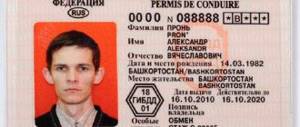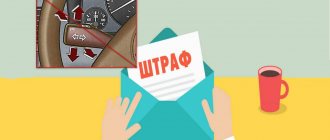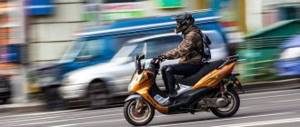How many passengers can be carried with category B?
According to Russian Government Decree No. 1097 of November 24, 2014, category B allows you to drive cars with the following characteristics:
- maximum weight no more than 3.5 tons;
- the number of seats with a driver is no more than 9, passenger seats - 8;
- You can use a trailer up to 750 kg. If the trailer weighs more than 750 kg, a TS-BE driving permit is required;
- if a trailer weighing more than 750 kg is used, then the weight of the car must be greater. The total weight of the vehicle and trailer must be no more than 3.5 tons.
The following vehicles meet the requirements for TS-B:
- crossovers;
- sedans;
- minivans;
- minibuses;
- jeeps.
If you do not violate traffic rules, the total weight of the car with a trailer does not exceed 3.5 tons, and the car weighs more than the trailer, then you can drive safely. The number of seats in a category B car without a driver’s license should not exceed: “8”.
If there is at least one more seat in the car, then you need to open D. All seats are taken into account, including those located next to the driver’s seat. The basic rules are contained in the traffic rules.
Rules for transportation in a car
In order for the traffic police officer to have no complaints against you, when transporting people in a passenger car, you must follow the following rules:
- The car must be in good working order from a technical point of view.
- All passengers must be fastened (in the back seat, if the design of the car allows it) (clause 2.1.2 clause 2 of the Traffic Regulations).
- If children under 11 years of age are to be transported in the back seat, the car must be equipped with seat belts and a special child seat appropriate for the weight and height of the child.
- When transporting children from 7 to 11 years old in the front seat, the car must be equipped with a special child seat and seat belts.
- Transporting children under 7 years of age in the front seat is prohibited in any form.
- Children should not be transported on the laps of adults in the front seat or on the driver's lap.
- It is contraindicated to transport people outside the cabin of a car.
- During the trip, you must not open the doors and move away without closing them.
- It is prohibited to carry more than 5 passengers in a passenger car.
How many people can you fit in a minivan?
It should be noted that minivan-type cars are in great demand on the market. They belong to the category of passenger vehicles. Drivers only need to have a category “B” driver’s license, and there are two more seats in the car, which helps solve the problems of families with more than three children.
For such cars, the maximum permitted number is no more than seven people.
Reference! The permitted number of people depends on the technical characteristics of each car model. For a passenger car, as a rule, this number should not exceed more than five passengers.
Features of obtaining rights – B
Persons over 18 years of age are allowed to take the exam only after completing training at a driving school. You cannot undergo self-training or self-study. The cost of studying at VU-B is on average 17,000 rubles, lasts from 2 months, includes:
- theoretical knowledge, certification on it;
- practical classes with an instructor, driving on a race track;
- driving a car in a city.
When the scheduled hours of study are completed, a driver's card is issued. Then you can take exams at the traffic police. There should be honey on your hands. a certificate indicating fitness to drive for health reasons. Read more about obtaining category B in this article.
After passing the exam at the State Traffic Safety Inspectorate, a driving license is issued with the opening of a B, B1, M license to drive a vehicle. A beginner must drive with an exclamation mark - to identify the vehicle for at least 2 years.
Driving license categories in 2021
Cars (except for vehicles of category “A”), the permissible maximum weight of which does not exceed 3,500 kilograms and the number of seats, in addition to the driver’s seat, does not exceed eight; Cars of category “B” coupled to a trailer, the permissible maximum weight of which does not exceed 750 kilograms; Category B vehicles coupled to a trailer whose permissible maximum weight exceeds 750 kilograms, but does not exceed the unladen weight of the vehicle, provided that the total permissible maximum weight of such a combination of vehicles does not exceed 3,500 kilograms.
To drive a category B vehicle with a heavy trailer, the driver will need category BE.
Category B vehicles coupled to a trailer whose permissible maximum weight exceeds 750 kilograms and exceeds the unladen weight of the vehicle; Category “B” vehicles coupled to a trailer whose permissible maximum weight exceeds 750 kilograms, provided that the total permissible maximum weight of such a combination of vehicles exceeds 3,500 kilograms.
Cars, with the exception of category “D” cars, the permissible maximum weight of which exceeds 3500 kilograms, but does not exceed 7500 kilograms; Vehicles of subcategory “C1” coupled to a trailer whose maximum permitted weight does not exceed 750 kilograms.
Motor vehicles designed to carry passengers and having more than eight seats in addition to the driver's seat; Cars of category “D” coupled to a trailer whose maximum permitted weight does not exceed 750 kilograms.
Motor vehicles designed for the carriage of passengers and having more than eight but not more than sixteen seats in addition to the driver's seat; Vehicles of subcategory “D1” coupled to a trailer whose permissible maximum weight does not exceed 750 kilograms.
Motor vehicles of subcategory “D1” coupled to a trailer that is not intended for the carriage of passengers, the permissible maximum mass of which exceeds 750 kilograms, but does not exceed the unladen mass of the vehicle, provided that the total permissible maximum mass of such a combination of vehicles does not exceed 12,000 kilograms .
Quite often, drivers have the question: “How to add an additional category to your license?” It's actually quite simple. You need to undergo training at a driving school for the appropriate category.
Well, in conclusion, we remind you once again that driving a vehicle without the appropriate category of license entails a fine of 5,000 - 15,000 rubles. In addition, the driver is suspended from driving the vehicle, and the car is sent to the impound lot.
Good luck on the roads!
The general definition for self-propelled vehicles is vehicles not intended for travel on public roads. Another feature is the maximum speed. It does not exceed 50 km/h. This usually includes tractors, combines and other agricultural machinery. However, the group is not limited to this.
| Categories/ subcategory | Acceptable transport | Age | Requirements for registration |
| A.I. | motor transport | from 16 years old | Medical certificate; Availability of specialized education in specialties related to driving self-propelled vehicles (no mandatory training required) |
| AII | vehicles with a total weight of less than 3.5 tons and the number of seats no more than 8 + driver's seat (analogous to passenger cars) | from 19 years old | Having a category B driver's license and more than 1 year of driving experience |
| AIII | vehicles intended for transporting goods weighing more than 3.5 tons | from 19 years old | Having a category C driver's license and more than 1 year of driving experience |
| AIV | vehicles for transporting passengers with more than 8 seats | from 22 years old | Having a category D driver's license and more than 1 year of driving experience |
| B | tracked or wheeled vehicles with engine power up to 25.7 kW | from 17 years old | Medical certificate; Availability of specialized education in specialties related to driving self-propelled vehicles (no mandatory training required) |
| C | wheeled special vehicles with engine power from 25.7 kW to 110.3 kW | from 17 years old | Medical certificate; Completion of training |
| D | wheeled special vehicles with an engine power of more than 110.3 kW | from 18 years old | Medical certificate; Completion of training |
| E | tracked special transport with an engine power of more than 25.7 kW | from 17 years old | Medical certificate; Completion of training |
| F | self-propelled agricultural vehicles | from 17 years old | Medical certificate; Completion of training |
The list of vehicles, as well as the requirements for paperwork, are approved by the “Rules for admission to driving self-propelled machines and issuing tractor driver licenses.”
Self-assembled devices (self-propelled wheelbarrows, etc.) can be considered self-propelled vehicles. They must also be registered with the traffic police, and the driver must have a driving license.
C1 is an additional permit for vehicles weighing from 3.5 to 7.5 tons, which makes it possible to couple a truck with a trailer whose weight is not heavier than 0.75 tons. Car vans fall under this classification.
Category CE
CE gives the right, after completing a training course, to drive a truck with a trailer weighing more than 750 kg. The training allows you to gain experience in maneuvering a heavy machine loaded with goods.
Mastering the ability to drive a vehicle with increased danger, as well as knowledge of the rules for moving heavy cargo trucks along highways, is confirmed by obtaining a qualification at this level. Passing a strict medical background check is mandatory. The load on the driver of a large truck is high and requires special health monitoring. Drivers receive permission to take exams and work after receiving a medical opinion and providing a medical certificate.
C1E allows driving a car of group C1 with a heavy trailer weighing more than 0.75 tons. At the same time, the total weight of the car and trailer is not more than 12 tons. CE is a higher level that allows the owner to drive a vehicle of class C1E automatically. Admission to driving flatbed trucks requires compliance with age restrictions and confirmation of practical driver skills. The category is open to persons over 21 years of age.
Open category C provides the opportunity for a base for specialized training and obtaining a special category A driver’s license for driving self-propelled vehicles:
- quad bike The license to drive a vehicle is issued by Gostekhnadzor, which registers this equipment.
- all-terrain vehicle
- tractor
Assignment of the professional category of tractor driver is not related to training in a driving school. Profile training centers are engaged in providing services to provide qualified training based on open driver categories B, C, D.
D1 allows the driver to carry out passenger transportation in vehicles with no more than 16 seats in the cabin. Towing a trailer with a weight of up to 0.75 tons is allowed.
Category D1E
D1E is received by drivers who have been trained to transport heavy vehicles consisting of a small bus and a trailer, the total weight of which is not more than 12 tons. The trailer is not intended for transporting passengers, and exceeding the weight of 0.75 tons, should not be heavier than the weight of the bus without load.
DE - subcategory confirms the developed skills and application of knowledge to drive a passenger accordion bus, consisting of several sections, and also allows driving a bus with a tow, the weight of which is more than 750 kg.
How many people can you carry with category D?
To obtain a D license, you will have to undergo training at a driving school, open the “D1” subcategory. To be issued a driving license, you must successfully pass the exam. When replacing an old license and obtaining a new driver's license D, D1 opens automatically.
VU “D”, “D1” gives the right to transport a number of people - from 8 to 16. This requires specially equipped places and a mark on the certificate. To transport more than 8 passengers, you need to undergo training at a driving school and open the appropriate subcategory. It is practically no different from “D1”, and the cost and training time are almost the same. It is advisable to undergo training on TS “D”, thereby opening D.
Requirements for vehicle drivers wishing to obtain driving license “D”, “D1”:
- Driver's license C or B.
- Total driving experience is more than 3 years.
- Age - from 21 years.
- Medical certificate of suitable health status.
The exam follows a standard pattern. First you need to answer a ticket that contains 20 questions, 18 of which must be correct. If the answer is incorrect, you will have to answer 5 additional questions; if there are 2 incorrect questions, then 10 additional questions. You can't make mistakes. Time is limited to 20 minutes. Read more in this article.
If the student successfully passes the theory, he goes to the race track, where he needs to pass a practice to the traffic police inspector. For vehicles D:
- stopping, starting on an overpass;
- entering the garage parallel parking in reverse;
- a snake in the corridor marked with cones;
- turning around when space is limited;
- turn 90 to the left/right in a narrow corridor.
The first two practical exercises must be passed, any two are selected from the rest, and then the test takes place again.
Fines
For each extra passenger, a fine of 500 rubles can be issued. For transportation of passengers outside the cabin - 1000 rubles. If the owner of the car violates the rules for transporting children, he faces a fine of 3,000 rubles.
In 2021, penalties for violating the rules for transporting people have been tightened. These changes will be in effect throughout 2021. The new rules are as follows:
- A fine for overloading a car or violating the number of passengers carried will have to be paid to the driver. Previously, sanctions were imposed on the driver and passengers outside the norm.
- Penalties are cumulative. Previously, only the largest fine was paid for a double offense.
When driving a vehicle without the appropriate permission on the back of the document, a fine is issued for the complete absence of a driver's license - in the amount of 5,000 to 15,000 rubles.
You will find a detailed table of fines in the corresponding section of our website.
What number of persons is considered overload?
Each vehicle has its own technical capabilities regarding the number of people placed in it. This figure is reflected in the documents of each car. First of all, this information is needed in order to know the capabilities of the vehicle during operation. Clause 8, clause 22 of the Traffic Regulations states that you cannot transport people in any vehicle in more numbers than the technical specifications allow.
The following table shows the parameters of the most common vehicles.
| Automobile | Number of seats |
| passenger car | 5 |
| minivan | 7 |
| minibus | 8-20 |
| 1-decker bus | up to 40 |
| 2-decker bus | up to 60 |
As a rule, the number of passengers corresponds to the permitted number of seats. However, there are cases when it is permitted to carry passengers standing.
Paragraph 22.3 of the traffic rules will cover cases in which it is strictly prohibited to transport people while standing. It is prohibited to carry passengers standing:
- In the back of a truck.
- On an intercity bus.
- On a bus traveling along a mountain route.
- On a sightseeing or tourist bus.
- When transporting children in an organized manner.
In other cases, you can transport people while standing, but again, within the limits established by the technical characteristics of the transport.











